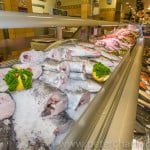
South Africa’s demersal (bottom) longline fishery is among our country’s most valuable fishing sectors. The three main seafood species it catches are two hakes – shallow-water and deep-water hake – and kingklip. Yet in 2010, when WWF-SASSI assessed the fishery for its SASSI List, they were concerned about its sustainability and all three species were placed on the Orange list, causing consumers to ‘think twice’ before buying it. Why? Incidental bycatch of other non-targeted species and endangered seabirds were among the main issues.
The longline fishery association (SAHLLA), in an effort to see this listing improve, approached WWF-SA, and in 2013, together they embarked on a Fishery Conservation Project with the Department of Agriculture Forestry and Fisheries (DAFF) and with the assistance of CapMarine and BirdlifeSA. The first step was to put observers on fishing boats to gather information. They monitored and recorded seabirds interactions with the fishing gear, what and how much was caught as bycatch, how much of the catch was discarded and how much of the fishing gear (hooks) were lost at sea.
Based on the information that the observers collected, WWF-SA and its partners, trained crews in responsible fishing practices, got industry to use bird-scaring devices that were re-designed to improve their effectiveness, and researchers assessed the effects of the fishery on sensitive habitats.
When WWF-SASSI did a new assessment of the demersal longline fishery last year, in 2015, they found a noticeable improvement in the sustainability of the fishery; it was having less of an impact on seabirds and there had been a decrease in bycatch of shark and ray species. Even though kingklip is caught as bycatch by the fishery, and therefore was not the main focus of the conservation plan, it was still deemed more sustainable thanks to these efforts. This shows the positive impact that a Fishery Conservation Project can have on non-target species.
The result was that all three species, the two hakes and kingklip, were moved from the SASSI Orange list to the Green list.